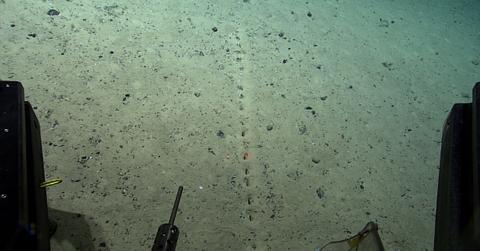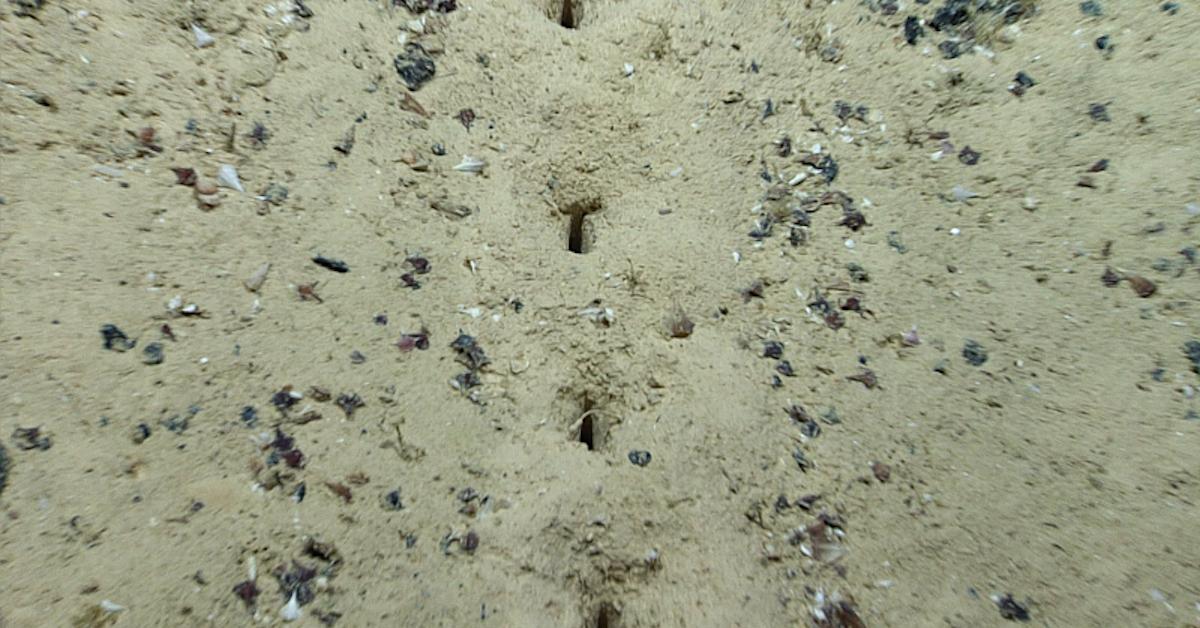Why Are There Holes on the Ocean Floor? Scientists Deem It a Mystery
Updated Jan. 26 2023, 11:36 a.m. ET
There are too many scientific mysteries out there the count — and one was just recently exposed.
During a recent undersea voyage, NOAA scientists discovered a series of highly mysterious holes on the ocean floor, for which they were unable to pinpoint the origins. The NOAA asked social media followers to post hypotheses about what could have possibly created them, and while they've received many viable and educated answers, what actually caused them is still unknown.
"During Dive 04 of the second Voyage to the Ridge 2022 expedition, we observed several sub-linear sets of holes in the sediment on the seafloor at a depth of approximately 2,540 meters (1.6 miles)," reads the July 27 NOAA report, which is titled The Case of the Mysterious Holes on the Seafloor.
"While the holes look almost human made, the little piles of sediment around them suggest they had been excavated," the report added.
"We attempted but were not able to take a peek into the holes and poke them with the tools on the remotely operated vehicle," the report continued. "It was also not apparent as to whether the holes were connected beneath the sediment surface."
Keep reading for more on this mysterious find.
What to know about the discovery of ocean floor holes:
While exploring the Atlantic Ocean, north of Portugal, marine scientists unexpectedly discovered a pattern of about 12 seemingly manmade holes in the sand. They were each about four inches apart. in lines extending no more than 6 feet long.
But, the holes likely weren't manmade. Per The New York Times, they were found about 1.6 miles beneath the ocean's surface, and they appeared to be "excavated" by some sort of creature. A week later, four more lines of holes were spotted 300 miles away.
Two decades ago, a similar discovery was made, with few resulting answers. For now, the holes are being labeled "lebensspuren," which is the German word for "life traces" — this refers to the fact that they are impressions in the sediment, likely created by live organisms.
“There is something important going on there and we don’t know what it is,” Dr. Vecchione, who was involved in the study, told The New York Times. “This highlights the fact that there are still mysteries out there.”
This was during the second of three three NOAA expeditions, in a series called Voyage to the Ridge 2022. The voyage, which started in May and ends in September, goes from Newport, R.I., to the Azores, and back to Puerto Rico. They're looking to learn more about how underwater volcanoes change the structure and life under the sea. It also sets out to observe how life under water is affected by magma.
But this open-ended discovery leaves many wondering what the holes could possibly be.
Here's what some believe the holes to be:
As previously mentioned, NOAA scientists have taken to Twitter and Facebook to get a consensus from the public on what these could possibly be. Yes, although they are scientists from the NOAA, they handle unanswered phenomena just like you and I — aka crowdsourcing — to hopefully find more information.
Although not all of the answers are going to be the right answers, explorers are desperate to know what kinds of animals, aliens, or processes could have caused these.
Take a look at a few of our favorite responses to the NOAA's crowd-sourcing tweet — the cause of the ocean floor holes still remains to be unknown, and in our opinion, it's probably the theory regarding animals using them as breathing holes.
But it's entertaining to see what people think these are nonetheless, and hopefully, we'll find actual answers in the foreseeable future.
This article, originally published on Aug. 8, 2022, has been updated to include more related links.

